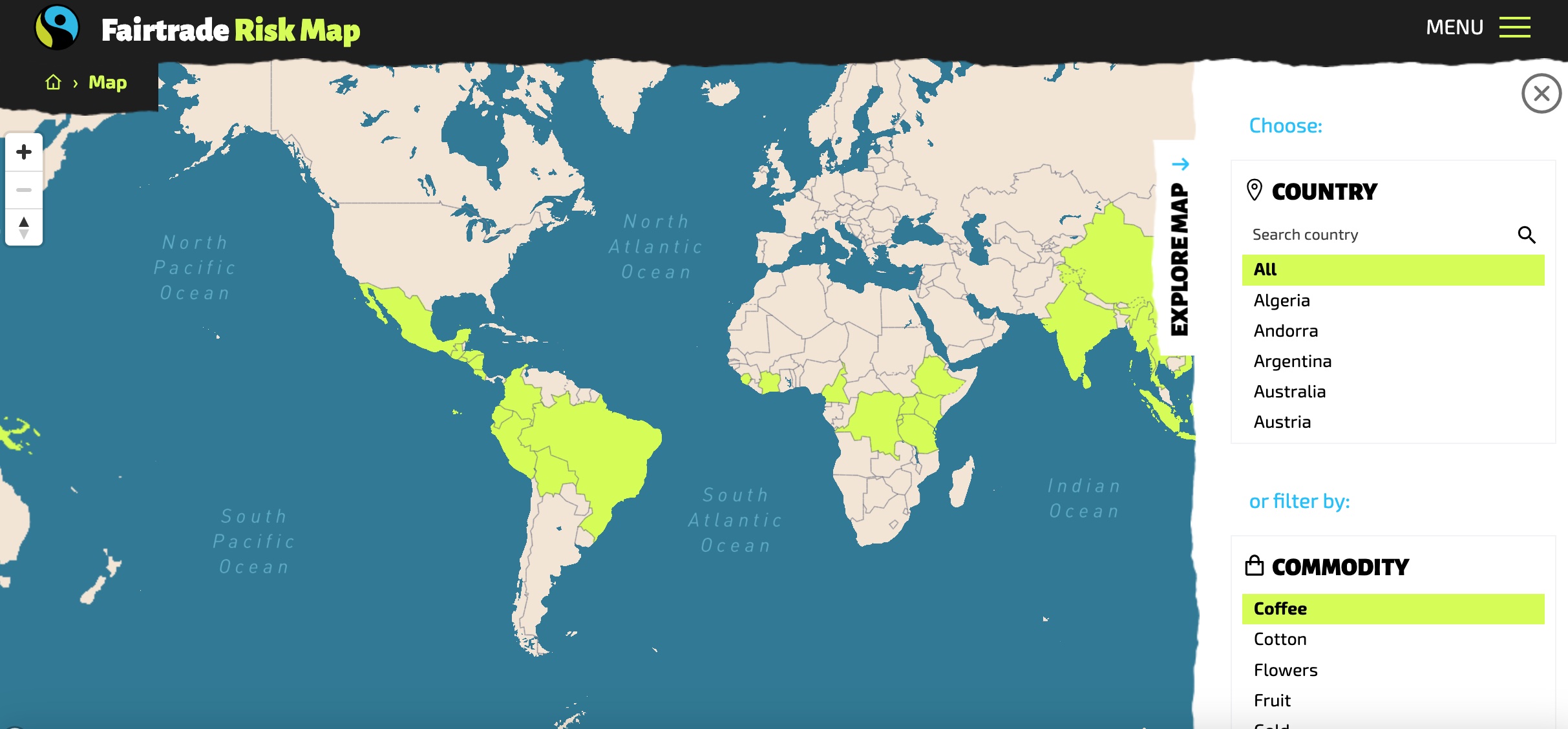The nonprofit Fairtrade International has released the Fairtrade Risk Map, an interactive tool designed to promote communication regarding human rights and environmental risks.
The map launched with week with a focus on five of the key commodities in agricultural sectors in which Fairtrade works, including the largest Fairtrade-certified product by volume: coffee.
The interactive tool includes a literal map that filters views by producing country or by commodity type. For each country selected, the map shows commodities produced there, as well as the most salient humanitarian or environmental issues associated with the production of those commodities.
The map does not filter down to regional or local levels, and its supporting resources routinely suggest it should be used to supplement more specific, individualized assessments of supply chain risk.
Within each country profile, the map offers 26 indicators — tied to subjects such as standard of living, gender rights and forced labor — that are assigned one of five risk-concern levels.
The organization said the map was the product of “our ongoing risk and impact assessment work — a collaborative effort with input from farmer cooperatives, workers and plantation management, Fairtrade staff from six continents, and external experts.”
Fairtrade said the tool is designed to be used by any actors within the supply stream, in order to promote dialogue and offer businesses “valuable insight on where to direct their sustainability efforts and support.”
In an announcement of the map release, the group suggested it might be of particular interest to European companies. EU regulators recently signaled their agreement on new rules that would require companies to conduct “deforestation-risk benchmarking” for certain products within their supply chains, including coffee. The map project itself was co-funded by the EU.
In the publication of its Risk Map, Fairtrade also noted an inherent risk in addressing risk.
“Being transparent about systemic human and environmental issues can also be risky for farmers and workers in itself,” the group wrote. “If companies are not ready to shoulder their part of the responsibility, they might opt to cut all ties rather than go through the process of mitigating and remediating risks together with farmers and workers.”
Within the interactive map tool, a feature that may be particularly interesting to coffee and coffee-adjacent organizations may be a document called “Risks & Root Causes in Coffee,” which can be found through a quick scroll here.
Does your coffee organization have news to share? Let DCN’s editors know here.








Comment